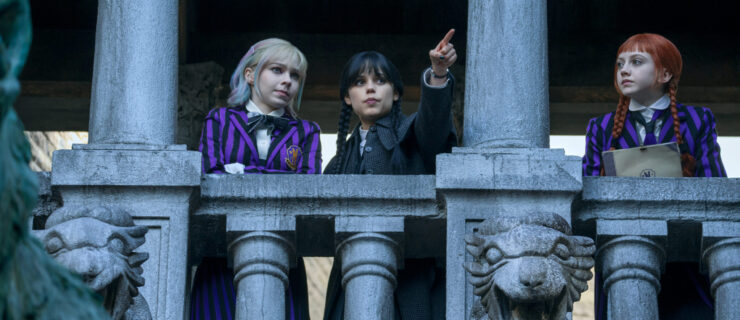Focus on Freelance: Dancing In Front Of A Green Screen
As a freelance commercial dancer, I tend to find myself dancing in all sorts of unusual performance situations. A few weeks ago, I told you what it was like to dance in Rachel Roy’s video Look Book, but this week I want to tell you what it’s like to work in front of a green screen.
First off, the term “green screen” can mean anything from a green fabric backdrop, to a wall that has been painted green. (The last time I worked in front of one, a production intern painted the entire set with can of kelly green paint when we arrived, and we went to hair and make-up while the walls dried.) Actors and dancers perform in front of a green screen so that, during editing, a new background can be transposed over the green surface to make it appear as if the people on-screen are actually in a different location. For example, with the use of a green screen, dancers in NYC can be made to look as if they’re doing a hula dance on a Hawaiian beach without ever having to board a plane.
Working in front of a green screen can be a little jarring, so it’s important to be prepared for this unique scenario if you plan to pursue a commercial career. Here are three tips I’ve picked up from dancing in front of a green screen:
-
Don’t wear green!
If you do, you will blend into the wall and become see-through on the film—you’ll end up appearing as if the scenery is splotched all over your clothes. [Note: you can use this effect to your advantage in certain circumstances. At my last shoot, I was asked to wear a green hooded, full-body unitard under a black coat. On screen, it appeared as if the coat had sprung to life and was dancing through the air!] -
Don’t get too close to the green wall.
Doing so will also make it seem as if you’ve disappeared on film. I learned this the hard way during my most recent shoot. During a freestyle session on the set, I attempted a handstand against the wall and the director told me it looked like I’d vanished into thin air. -
Know your backdrop.
Onstage, the set provides visual cues to help you get into character. But when you work with a green screen, you won’t see the scenery until after it has been added to the film. If the virtual location has been decided by the time you arrive at the shoot, make sure you are aware of it so that you won’t look out of place in the final cut.



